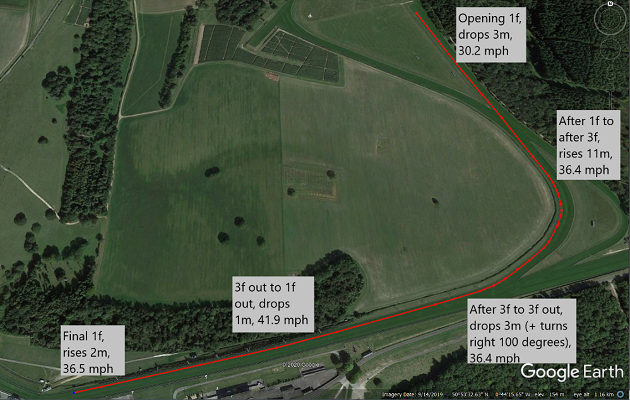The simple answer to the question “What does it take to win the Sussex Stakes?” is “plenty, but more in some years than others”.
The race was established in 1841, opened to four-year-olds in 1960, to all horses aged three and over in 1975, and has claims to be considered the best turf mile race in the world, though those associated with the Prix Jacques le Marois at Deauville, the Queen Elizabeth II and Queen Anne Stakes at Ascot and the Breeders’ Cup Mile at various locations in the US might demur.
It has been won by some of the sport’s true greats, including the greatest of all, Frankel, who remains the only dual winner. These are the best winners as judged by their peak Timeform annual ratings.
That is quite a roll call, and it does not even include such feted recent winners as Kingman (2014, rated 134), Rock of Gibraltar (2002, 133) and Giant’s Causeway (2000, 132).
The 10-year average Timeform rating required to win the Sussex Stakes is one of the highest for any race anywhere on the planet, at 127.5, with runner-ups weighing in at 123.8 and third-placed horses at 119.3. With few exceptions, you need to be high-class, or close to it, even to get a look-in.
Superior ability is a given, then, but adaptability is also required, as the mile track at Goodwood is unlike any other on which championship races are run. It drops in the first furlong, then rises significantly to the five-furlong pole, swings right and drops again, before rising slightly near the finish.
That last feature has caught out more than a few jockeys and horses over the years, but the Goodwood mile essentially rewards speed over stamina despite rising by six metres from start to finish.
The attached image illustrates the unique and stop-start nature of the Goodwood mile course, including details of inclines, declines and bends, with the mph figure the approximate speed of Too Darn Hot at various junctures when winning in 2019.

One consequence of the ups and downs and twists and turns is that horses often open up only after halfway. Par finishing speed %s (speed at finish as a % of average speed for race overall) are well above 100 at this distance.
The closing stages of the Sussex Stakes have seen some phenomenally quick splits, from some phenomenally good horses, especially when a slow early pace has led to a late sprint.
Video analysis has Kingman running 10.22s then 10.53s in the final two furlongs of his 2014 win, the latter a huge achievement and one that even Frankel did not match in his wins (remember that the final furlong at Goodwood is slightly uphill).
Then again, the same methods have Frankel banging in a 10.10s penultimate furlong for his 2011 Sussex Stakes win, implying a gargantuan stride of over 27 feet at that stage, plus sub-11.0s splits from three furlongs out to two furlongs out and from two furlongs out to one furlong out when following up the next year.
If the Sussex Stakes proves to be slowly-run – as were those three – then having a horse with world-class finishing speed certainly helps.
There are occasions when the opposite is required. Here Comes When completed in a time of 1m 46.11s in 2017 following an extended downpour, with the runners coming to the stand side in the straight and recording a slower-than-par finishing speed of 102.4% as stamina was tested.
That is a Frankel/Kingman furlong longer than the race record time of 1m 35.66s achieved by Aljabr on ground described as “firm” by Timeform in 1999.
In addition to ability, adaptability and speed (and sometimes stamina), you may need a bit of “luck” to win the Sussex Stakes. Even in small fields, there can be trouble in running as horses gravitate towards the far rail.
Most of the recent editions have been fair enough fights, with the best horses emerging triumphant, but there was a period in the 1980s when the race was more controversial.
The 1981 edition was the third of four nip-and-tuck meetings that year between the Irish-trained Kings Lake and the British-trained To-Agori-Mou.
Kings Lake had edged it in the Irish 2000 Guineas, but been demoted for interference to his rival, then had that demotion overturned on appeal, with Timeform racereaders providing independent input (“our racereaders are among the best in the business” Racehorses of 1981 boldly stated).
To-Agori-Mou exacted his revenge narrowly in the St James’s Palace Stakes at Royal Ascot, with jockey Greville Starkey flicking a “V” at Eddery on Kings Lake as they crossed the line, and no quarter was about to be given in what was a grudge match at Goodwood.
Well, no quarter was about to be given from one to the other, but a quarter and perhaps a half was given to Kings Lake by his stable-companion Last Fandango, who conveniently moved to one side in the penultimate furlong, allowing the hitherto “hopelessly hemmed in” Kings Lake to quicken through to deny To-Agori-Mou by a head.
The two horses went onto finish third and second respectively – meaning the score ended up two apiece – behind French star Northjet at Deauville and both were rated 133 in Racehorses of 1981.
Three years later, Starkey was found guilty of reckless riding in the Sussex Stakes on Rousillon as, in a five-runner race, he shut the door on his main rival Chief Singer, who nonetheless managed to battle his way back to victory.
Rousillon returned 12 months later to win the Sussex Stakes in straightforward fashion under the same jockey and shed his Timeform squiggle along the way.
Focus on 2020
Luck cannot be guaranteed, but the chief protagonists in this year’s race can boast some or all the other necessary attributes. Indeed, the beauty of the race – and of many races at the elite level – is the degree to which individual jockeys may employ tactics to tip the odds in their favour.
Of the main players, Circus Maximus and Kameko are probably the ones with more stamina than speed: the former helped to force the pace when second to Too Darn Hot 12 months ago, while the latter needed nearly all a strongly-run 2000 Guineas at Newmarket to get to the front (24.50s final two furlongs).
Then again, racing up with the pace does not have to involve going fast if positional advantage is sufficient, as Circus Maximus showed in winning a steadily-run Queen Anne Stakes at Royal Ascot last month, putting in a 23.62s final two furlongs.
That meant it would have been well-nigh impossible for Mohaather to have caught him from a position out the back, even had he not encountered significant trouble in running (he finished almost on the bridle in seventh).
Mohaather has since had a clear run and displayed a sparkling turn of foot (23.53s final two furlongs) to win the Summer Mile on the round course at Ascot. He is just the sort of high-quality push-button-acceleration horse that has thrived in the Sussex Stakes over the years.
Siskin probably lies in the “speed more than stamina” camp. There were doubts in some quarters about his ability to see out the Curragh mile prior to the Irish 2000 Guineas in June, but he answered them in style with an approximate 23.65s final two furlongs and with the kind of manoeuvre to get out of trouble that puts a big tick in his adaptability box.
Circus Maximus is one of five at the entry stage from the Aidan O’Brien stable, including Wichita – who was just outstayed by Kameko in the Guineas – and Lancaster House, who has made the running of late. It is likely that the pace will be set by a runner from Ballydoyle and it will be interesting to see how they shape the race.
My money is already with Mohaather, who was available at 4/1 shortly after his last win, but the Sussex Stakes looks like being even stronger than I had envisaged at the time.
Whatever happens, we can expect a deliciously nuanced interplay between the horses, jockeys and factors mentioned above. And maybe we will get another superstar winner this year.
This year's Sussex Stakes is due off at 15:15 on Wednesday 29 July. Don’t miss it!





















.jpg)
.jpg)


 Url copied to clipboard.
Url copied to clipboard.

.jpg&w=300)
.jpg&w=300)


.jpg&w=300)














